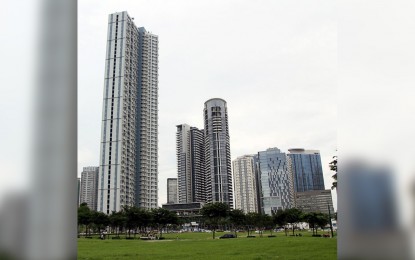
MANILA – Economic managers have revised their growth targets for 2020 and 2021 and these have been included in the proposed PHP4.506-trillion national budget for next year that has been approved by the President last July 30.
In a statement Thursday, the inter-agency Development Budget Coordination Committee (DBCC) said this year’s growth figure has been revised to -5.5 percent, deeper than the previous revised figures of between -2.0 to -3.4 percent.
The latest figures were arrived at after considering the impact of the Covid-19 pandemic on tourism, trade, and remittances, it said.
Economic managers also changed their growth target for next year to 6.5 to 7.5 percent, which is also the new target for 2022. This was previously between a range of 8 to 9 percent.
“The priority implementation of the Build, Build, Build infrastructure program and revitalization of the industry and services sectors are expected to lead the recovery,” the statement said.
Similarly, inflation assumption for 2020 was changed to a range between 1.75 to 2.75 percent due to weaker demand because of the pandemic, while the assumption for 2021-2022 was kept between 2 to 4 percent.
The target for the period was kept at between 2 to 4 percent.
“This means that prices in the typical consumption basket of Filipino families will remain stable and predictable,” the statement said.
Assumption for Dubai crude oil futures was revised to USD35-45 per barrel from USD 23-39 per barrel from the 2021-2022 assumption was kept at USD35-50 per barrel.
The Philippine peso to US dollar assumption for this year is at PHP50-52 while it is PHP50-54 for the next two years.
The local currency is currently trading at 49-level against the greenback.
Exports are seen to contract by 16 percent this year and imports by 18 percent.
For 2021-2022, exports are seen to recover and post a growth of 5 percent and imports to expand by 8 percent “consistent with the expected pace of recovery in global and domestic demand in the following years.”
Inflows from overseas Filipino workers (OFWs) are seen to decline by 5 percent this year but to post a 4-percent growth in the next two years.
With the increased spending vis-à-vis the government’s Covid-19 response and the recovery program, economic managers changed the disbursement program for this year to PHP4.34 trillion, up by PHP110 billion, while revenues were reduced to PHP2.52 trillion from PHP2.61 trillion.
Budget gap for this year until 2022 is now estimated to account for about 8.4 to 9.6 percent gross domestic product (GDP).
“Despite these adjustments in deficit spending, the DBCC is confident that the national government’s debt will be kept at a sustainable and responsible level, within the 60 percent internationally-recommended debt threshold, by 2022,” it added.
During the joint briefing of the DBCC and the National Economic and Development Authority (NEDA) Thursday, Finance Secretary Carlos Dominguez III said the government is borrowing funds to augment its revenues and properly finance its programs and projects.
He, however, said that bulk of the borrowings until 2022 will come from domestic fund sources at about 75 percent while the balance of 25 percent will be sourced from external creditors.
In terms of funding the 15-day modified enhanced community quarantine (MECQ) in the National Capital Region (NCR), Bulacan, Laguna, Cavite and Rizal, Dominguez said any stimulus package “has to be affordable.”
He said that while the government recognizes the need to help the vulnerable sector, it cannot just spend loosely because this will balloon the budget gap.
He added the government is ready to spend additional PHP180 billion this year.
“These numbers are arrived at to keep our fiscal deficit in a manageable zone,” Dominguez said.
He said “the government is waging a war on Covid-19 on all fronts” by addressing the issue through fiscal stimulus, a recalibrated budget for 2021, and large infrastructure investment.
“Although the first semester figures underscore the challenges ahead of us, with the public’s cooperation and if we work together to shore up consumer confidence, we will deliver better economic outcomes in the final half of this year,” he added. (PNA)
